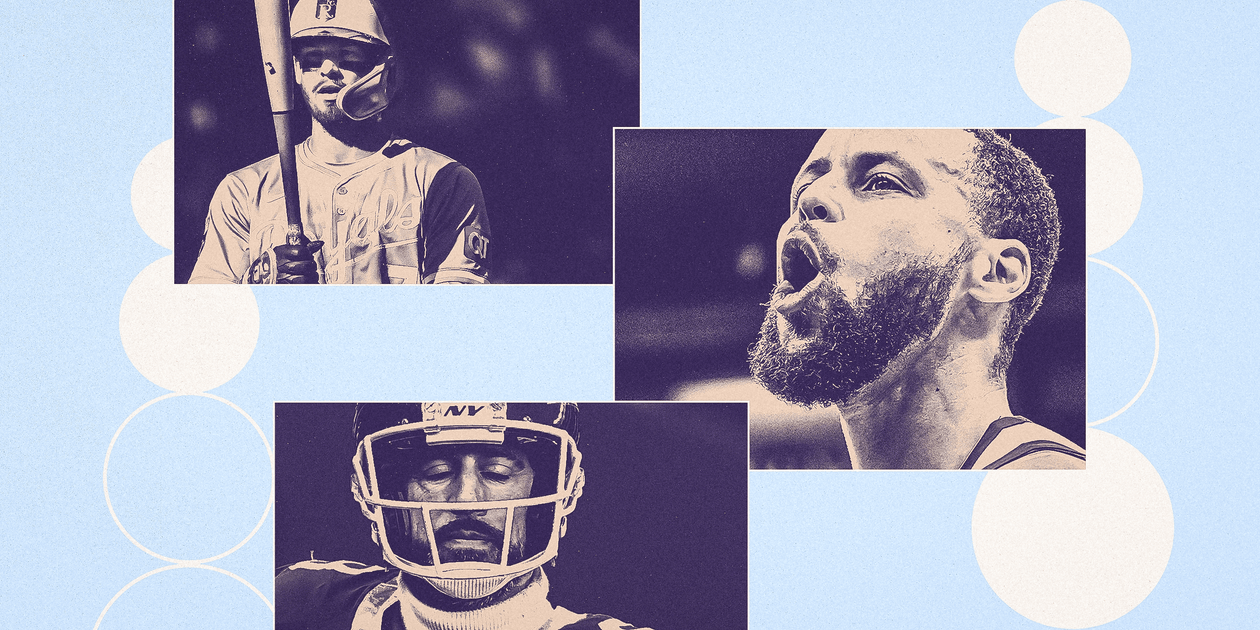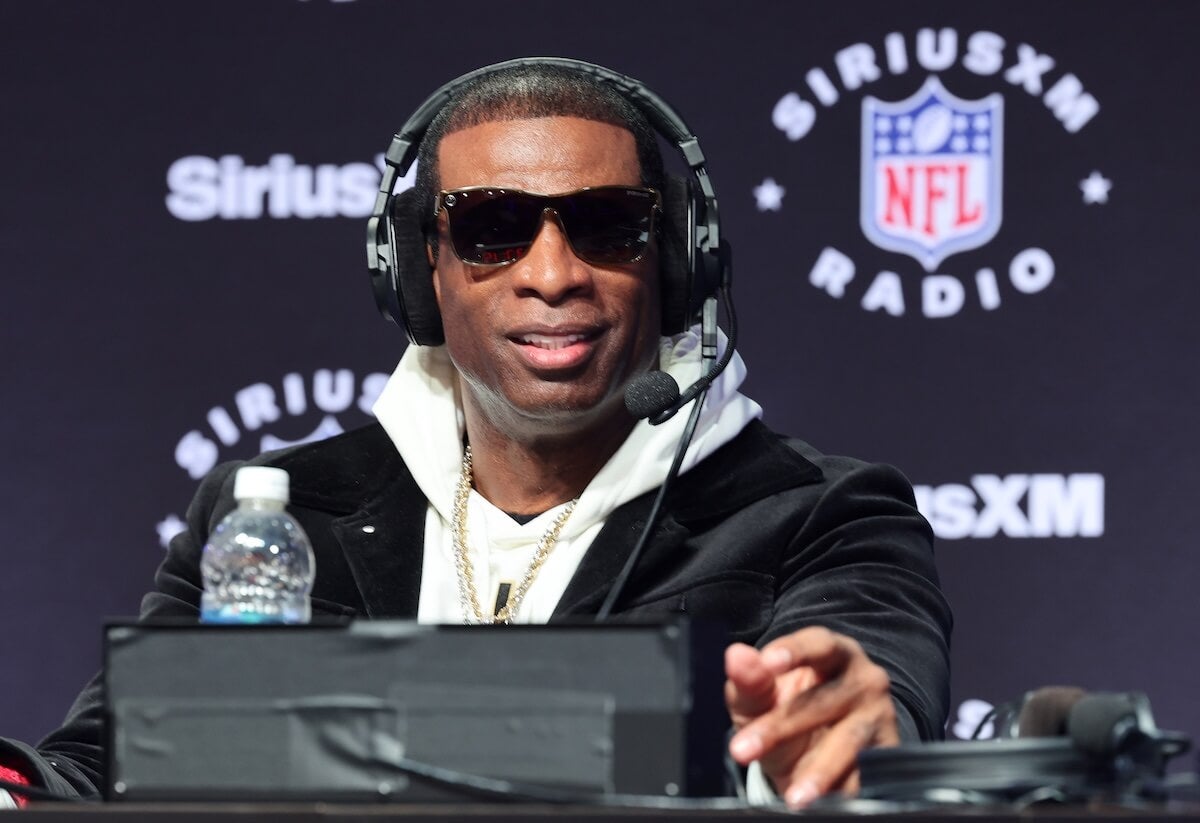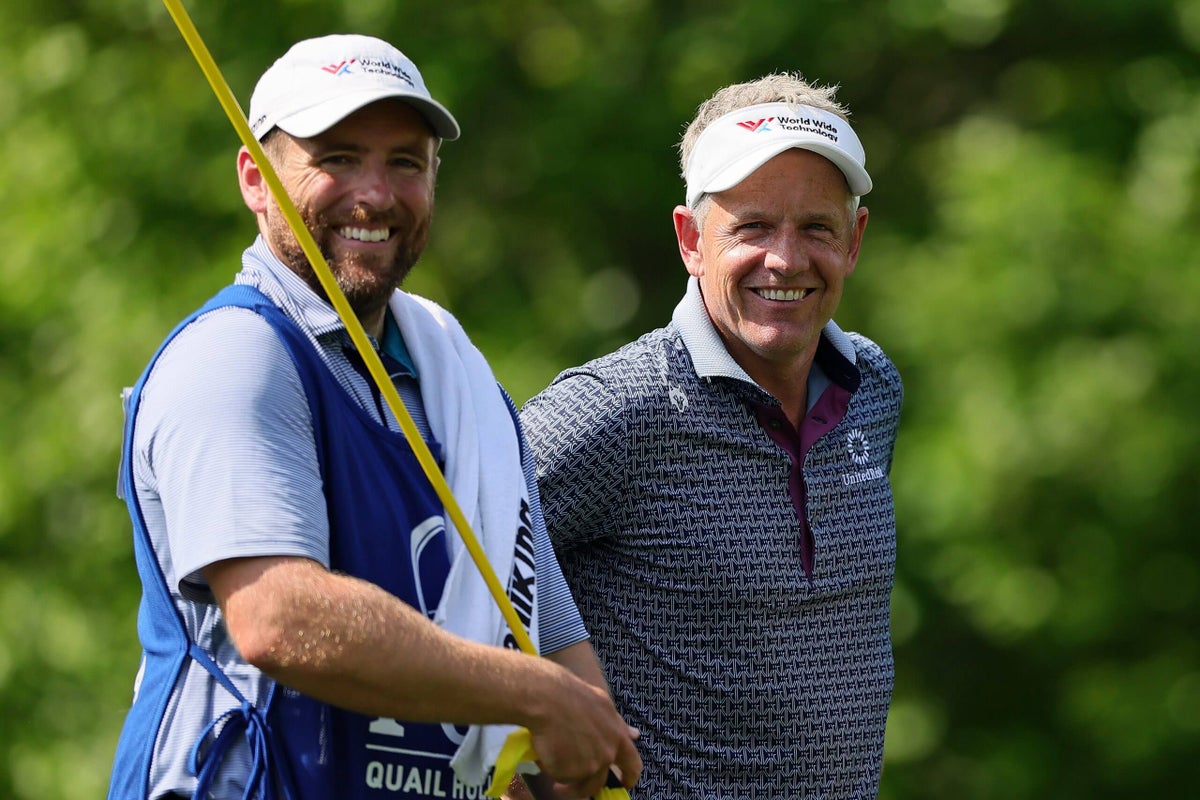Editor’s Note: This story is a part of Peak, The Athletic’s new desk covering leadership, personal development and success through the lens of sports. Peak aims to connect readers to ideas they can implement in their own personal and professional lives. Follow Peak here.
A few weeks before the NFL playoffs, a group of Kansas City Chiefs players gathered inside a meeting room and listened to an instruction: Go to your happy place.
The voice belonged to Dave Merritt, the team’s secondary coach. He closed the door and hit the lights, leaving the room pitch black. He then outlined an exercise: The players were to close their eyes, imagine their happy place, a place of safety and warmth, and then start counting their breaths in silence.
Inhale.
Exhale.
If anyone had stumbled into the room at that moment, it might have looked a little odd — a little new-age or crunchy, a little woo woo, a group of NFL defensive backs breathing slowly in the darkness. But the intention, Merritt said, was for his players to recognize the value of consciously controlling their breath, to understand the tools that would allow them to calm their autonomic nervous system and enter a parasympathetic state.
“It’s a habit that any human being should learn,” Chiefs safety Bryan Cook said. “Focusing on your breath.”
Cook, 25, is a two-time Super Bowl champion and firmly ensconced in Generation Z. He meditates at least once a day. Three days before the Super Bowl, he woke up in a hotel in New Orleans and began his day with 20 deep breaths.
“People get caught up in doing the daily tasks,” he said. “If you actually just sit, it lets your body do what it needs to do. You’ll find yourself in a place of peace and calmness.”
In a previous era, Cook might have been an eccentric outlier. But as the concepts of mindfulness and mental health have gained a societal foothold, he’s part of a cohort of athletes who have found performance benefits in the simple act of breathing.
From NBA stars Steph Curry and Shai Gilgeous-Alexander to NFL quarterback Aaron Rodgers to MLB pitchers Logan Webb and Marcus Stroman, nearly ever sport has athletes using focused breathwork to calm their minds, improve their lives and boost their performance.
The Super Bowl featured several deep breathers. Lane Johnson, the Eagles’ All-Pro right tackle, utilizes box breathing, the Wim Hof method and Tummo meditation — an ancient Tibetan Buddhist practice — to combat anxiety and depression, while his fellow tackle Jordan Mailata incorporates regular belly breathing, which he picked up from his therapist and yoga instructor.
To some, it may seem puzzling. It’s just breathing, right? The science, however, is quite clear, according to Nicholas Tiller, a researcher at the Lundquist Institute at Harbor-UCLA Medical Center. Using a regular deep breathing routine can reduce your anxiety, blood pressure and heart rate while improving your overall mental health.
To the true believers — the deep breathers, the meditators, the uber-relaxed — the equation is simple: Regular breathwork can help athletes manage a grueling schedule, stay on the field and extend their careers. It could also make anyone a little happier and more productive.
All it takes to start is a deep breath.
One morning a decade ago, a former minor-league pitcher named Harvey Martin woke up early to meditate.
Martin had always been a seeker. He had dabbled with breathwork in college and tried meditation when he was pitching in the Milwaukee Brewers’ farm system. But his career crumbled in 2015 when he developed a case of the “yips.” Wrecked by anxiety, his ERA ballooned and the side effects compounded. His stress levels spiked. He suffered from gastrointestinal issues. He needed a way to calm himself. So he turned back to breathwork.
He started in secret, waking up early so his roommates wouldn’t notice.
“I was pursuing that to purely heal myself,” he said.
Martin discovered that, like many Americans, he was “a chronic mouth breather,” meaning he unconsciously breathed through his mouth instead of his nose. The condition is associated with sleep disorders, such as sleep apnea, and can bias your nervous system toward a sympathetic state, triggering your body’s “flight or flight” response. His breathing, he believed, was worsening his anxiety. He spent the next year working on his own health.
“It’s kind of like all things,” he said. “Once you see it, you can’t unsee it.” He discovered the Wim Hof method, a breathing technique popularized by the famed Dutch wellness guru and increasingly used by athletes. It consists of a period of rhythmic hyperventilation followed by a long breath hold.
One reason for its appeal? It can be done in minutes.
Martin supplemented the regimen with alternating trips to the sauna and cold. When his anxiety improved and his GI issues reversed, he fully bought in, evangelizing his methods to other athletes. His exploration happened to coincide with a small group of elite athletes extolling the benefits. (Rodgers, then with the Green Bay Packers, said breathwork was a “common ritual” that helped him “get back to center.”)
By 2019, Martin launched his own training company. And by 2021, San Francisco Giants manager Gabe Kapler hired him to be the team’s “breathing specialist.”
It was a novel role, and Martin wanted a fresh approach. He wasn’t a sports psychologist or a mental skills coach, a title coming into fashion. He instead viewed his job through the lens of physiology. He reasoned that if athletes could control their nervous systems by the way they breathed, they could then control their mood and motivation.
“Which inevitably would control the way you think,” he said.
His training sessions began with the mechanics of deep, slow nasal breathing, teaching his athletes to understand their diaphragms. Then he moved on to more intense methods. Players would control their breath while standing on a board of nails or in a tub of ice-cold water. They’d sit in darkness and experience “sound bath meditation,” a form of audio therapy in which singing bowl instruments — derived from ancient cultures across Asia — are used to induce relaxation. They also learned “grounding,” the simple act of walking barefoot on the outfield grass.
“I remember when Harvey first got here,” Giants starter Logan Webb said. “I was like, ‘Who is this hippie telling me I need to go walk on the grass barefoot or breathe with him?’”

Webb was 24 and coming off a disappointing year. Open to anything that might help, he was soon one of Martin’s most diligent students. They ran through one breathwork session on the day before his starts and another in the days after. If Webb felt out of whack, he had one question: Where’s Harvey?
Breathing wasn’t the only reason he transformed into one of the most dependable pitchers in baseball. But after finishing second in the NL Cy Young in 2023 and logging the second most innings in all of MLB from 2021 to 2024, he figured there was something to it.
“There’s times when your elbow or your back or hip is maybe sore or a little tired, and you start doing these breathing exercises,” he said. “I don’t know how to explain it, but you start feeling blood flow going into those spots.”
In the offseason Webb adheres to a simple routine. He retreats to a room in his house, turns off the lights, lies on a pillow and covers himself with a blanket. He begins by doing deep, nasal breathing. He then turns on a guided video of the Wim Hof method. Sometimes his wife, Sharidan, joins him.
“She’s not playing a sport, but it calms her down,” he said. “It just relaxes you. It takes you away from life for a couple of minutes.”
Martin has found other believers in Yankees starter Marcus Stroman and a collection of NHL players, including Utah’s Nick Bjugstad and Columbus’ James van Riemsdyk. Stroman believes the sessions to be an “untapped weapon” that most players have never considered.
“It’s so basic,” Martin said. “But it’s very misunderstood.”
The COVID-19 era brought increased awareness to the human respiratory system. It also created a cottage industry of products meant to help us breathe better: nasal dilators. Canned oxygen. There was even a nasal inhaler, sold on Amazon, that claimed to cleanse your liver.
It was the last one that really irked Tiller, the researcher at UCLA.
Raised in the United Kingdom, Tiller has made a career in two tracks: Studying respiratory medicine and debunking junk science. So in 2023, he co-authored a paper, published in the European Journal of Applied Physiology, with one goal: Separate the benefits of what scientists term breathing interventions from what Tiller calls “the bulls—.”
The short version of the findings was straightforward. Pretty much every respiratory intervention or product on the market is not supported by science or research, except one: deep breathing.
When you breathe slowly and deeply, your lungs fill up with oxygen. The process stimulates the vagus nerve, which runs from the large intestine to the brain. The stimulation sends a message to the brain that your “fight or flight” response is not needed. It also increases parasympathetic drive — a mode commonly known as “rest and digest.”
One analogy that doctors use is to think of the nervous system as an automobile. Sympathetic drive — the fight-or-flight response — works like a gas pedal, while parasympathetic drive provides the brake. But unlike some systems in the body, we can control our nervous system — our personal speed — through breathing.
Of course, this knowledge isn’t new. The ancient Greeks believed in the concept of “pneuma,” or breath, a force that sustained consciousness. The ancient Chinese utilized Qigong, a system of meditation and breathing. And anyone who has ever taken a yoga class has used some form of the ancient practice of Pranayama, or breath regulation. But after years of research, Tiller believes that one doesn’t need to be spiritual or practice meditation to gain the benefits of breathwork.
“When you look at the practical benefits of meditation,” he said, “most of it comes from the deep-breathing element.”
Just one session can be helpful. But research has shown that regular, slow breathing can increase the benefit, even if it’s something as simple as box breathing, a technique that includes inhaling for four seconds, holding for four seconds, exhaling for four seconds and then holding for another four. Tiller recommends a slightly different technique, suggesting a slow breath in for four seconds, a hold for four seconds, and then an out breath for eight seconds, pursing the lips so you don’t exhale too quickly.
But that’s just one method of many.
Mike Maric, a former competitive freediver and a professor at the University of Pavia in Italy, has authored four books about breathing and worked with some of the top athletes in Italy, including Olympic gold medalist swimmer Federica Pellegrini. Maric preaches what he calls the “3-6-5 method,” which translates to three times per day, six breaths per minute (inhale for five, exhale for five) for five minutes at a time.
“I see more athletes interested in meditation and mindfulness,” he said from Italy. “And the best example of mindfulness is a breathing technique.”
For more than a decade, Maric said, he extolled the virtues of mindfulness and breathwork to a growing group of Italian Olympians. The work felt radical and a little niche, as if he was passing along a secret that nobody else was using. But then he started looking across the world, to athletes in the United States.
It was then he realized that his secret domain was everywhere.

Lane Johnson is what you might call a YouTube guy. Standing 6-6 and 325 pounds, he is a hulking offensive tackle with two Super Bowl rings and a sparkling resume. He also possesses a curious mind, which results in online deep dives into the training routines and unorthodox techniques of successful athletes and military special ops.
He has tried Wim Hof, studied a similar practice called Tummo breathing — practiced by Buddhist monks in the Himalayas — and recently, he stumbled upon a vibrational chair from a company that touts itself as “the world’s most advanced nervous system regulation device.” Part of his interest stems from his history of anxiety and depression, which he has battled since college. But at age 34, as his body declines, part of it is pure competitiveness. He’ll take edges wherever he can find them.
“I look at Olympic athletes, like wrestlers, anybody that’s done well,” Johnson said.
The increase of athletes like Johnson being more open to breathwork has dovetailed with two long-term trends. The modern athlete is more likely than ever to be aware of their mental health. The modern athlete also is open to the tiniest advantage, no matter where it comes from. When Martin talks to athletes about the benefits, he rarely starts with a conversation with mental health. Instead he talks about the athlete lifestyle — the travel, time zones and demands.
“If you did certain things that athletes do, for vacation, you’d be tired,” Martin said. “And they do that and perform every night.”
When Curry, the Warriors’ star, started working out with skills coach Brandon Payne in the early 2010s, the training came with a message: “Breathing is a skill, too.” Curry used techniques to calm his mind, but he also integrated them into his workouts, so that a stationary ballhandling drill might come with a specific breathing pattern.
Breathe in for three, hold for one, breathe out for three.
Curry is a cerebral athlete with world-class spatial awareness and coordination. But when he enters one of his patented “flow” states, draining off-balance 3s from all over the court, Payne believes there’s one thing that allows him to stay locked into the groove: his breathing.
“It all starts with having a sense of calm and having a sense of organization inside your brain,” Payne said.
If athletes like Rodgers and Curry are believers, perhaps it’s no surprise that others have followed. To Martin, it’s the search for a healthy body — and holistic lifestyle — that has caused more athletes to find comfort in breathing. The list extends to golfers such as Rory McIlroy and Gary Woodland, who used breathwork to calm himself after facing frightening symptoms related to a brain lesion. It also features Gilgeous-Alexander, New York Jets quarterback Justin Fields and Kansas City Royals shortstop Bobby Witt Jr., who incorporates a deep breath into his routine at the plate and uses meditation to stay present off it.
“Just to kind of clear your mind, refocus, reload and kind of re-engage in what you’re doing,” Witt said.
Like any other skill, Martin maintains that mastering your breath requires technique, practice and time. But unlike most skills possessed by professional athletes, this one is clearly, fundamentally different: Anyone can do it.
Rustin Dodd is a senior writer for Peak, The Athletic’s new desk covering leadership, personal development and success. He last wrote about Nick Sirianni and why first impressions are misleading. Follow Peak here.
(Illustration: Dan Goldfarb / The Athletic; Stacy Revere, Emilee Chinn, Thearon W. Henderson / Getty Images)




